SERVICE PROVIDER MODULE: Why are siblings of people with disabilities important?
- Service Provider Module
- Strategies for Building the System Capacity to Include Siblings
- What Can Service Providers Do to Increase Sibling Involvement?
- Person-Centered Planning and Self-Directed Services
- Common Person-Centered Planning Methods
- Deciding Which Process to Use
- Good Person-Centered Planning Invites Whole Family Involvement
- Person-Centered Planning – Foundation Values, Principles, Best Practices and Outcomes
- Staff Development
- Learn from the Experts – Voices of Experience
- Quiz
- Survey
-
Service Provider Module

Welcome to the Service Provider Online Learning Module! In this course, you will be offered a variety of ways to learn more about siblings of people with disabilities. You will enjoy videos, online links to resources, and rich reading material.
Download the Reflective Question Form so you can consider some important questions while you complete the online module.
Download Reflective Questions for the Provider Module PDFAs you watch the following video, please reflect on your own sibling experience – at all ages. If you don’t have a sibling, think about the sibling-like relationship you have or someone you know well who does have a sibling.
Video:
The Other Child (My Brother has Autism))In the video, siblings of all ages talk about their connection to their sibling with a disability and how they care about, think about, and worry about their siblings’ future.
This video has several powerful quotes such as:
- "We share more genetically and environmentally with our siblings than with anyone else. It is as close as you can get."
- "Brothers and sisters of people with disabilities, even when they are young, are thinking about big issues."
- "Having a brother with autism has certainly changed my entire personality and my whole world."
REFLECTION
What is/was your own sibling experience like? If you are a person who does not have a sibling with a disability, how is your experience similar or different than the relationships described in the video?
Being a sibling across the life stages
Siblings of people with disabilities have different needs across the lifespan. As siblings grow and develop, their relationship and roles with their brother or sister does as well. At all ages, siblings need information, peer support, and an opportunity to discuss the future.
Please read Sibling Needs Across the Life Course that outlines the various needs that siblings of people with disabilities may have across developmental stages.
-
Strategies for Building the System Capacity to Include Siblings

Understanding and engaging with siblings
Download the Tip Sheet for Working with Siblings PDF
Please listen to 2 segments from the SiblingResources.org Disability Service Provider Webinar: Engaging and Supporting Siblings of people with DD by Katie Arnold, Executive Director of Sibling Leadership Network
The full webinar can be found in the SiblingResources Media Archive
From the sibling perspective: Transitioning roles from parents to siblings is challenging
Some of the key points of this audio clip are:
- When siblings begin to be more involved in interacting with their sibling’s provider agencies, the experience can be uncomfortable because agencies are more familiar with working with parents.
- Sometimes siblings don’t want to step on their parents’ toes and may "go along" with their parents’ wishes, in accordance with their family dynamics. Siblings may later be interested in making different decisions.
- Out-of-state siblings may struggle with logistics of how to help their siblings.
Tips for working with siblings
- Don’t expect siblings to be just like parents
- Be patient with family dynamics
- You will learn over time how to best interact with siblings.
- Actively reach out to siblings to establish a relationship. Invite siblings to organizational events. Ask siblings what they may need to know and how they may need support for themselves.
REFLECTION
What has your experience been like working with siblings? After listening to these audio clips, which tip do you think would be most useful in your current role?
-
What can providers do to increase sibling involvement?
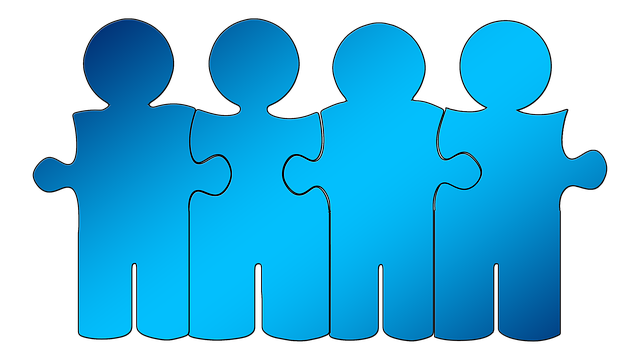
Include, connect with, and welcome siblings
- When you meet with a parent, ask about siblings and inquire about whether they would like to be involved.
- Ask the person with the disability how s/he want his/her sibling(s) to be involved.
- If the person with the disability would like his/her sibling to be included in activities or events, caregiving providers can help facilitate a phone call or email to make this invitation.
- Include siblings in service planning and family future planning meetings.
- Gather contact information (phone numbers and email addresses) for siblings and make sure that this information is updated regularly.
- Reach out to siblings to directly communicate with siblings. Even simple efforts at introductory relationship building between the staff and the sibling will build a foundation for future conversation. Try to make at least one outreach a year, such as giving the sibling a call to touch base.
- Siblings sometimes feel that they are only contacted in a crisis or when something negative has occurred. Be in contact with siblings with positive news as well.
Share information and resources with siblings
- Promote and share sibling-specific resources - including SiblingResources.org, Sibling Leadership Network, SibsNY, and Sibnet on Facebook. (More information about these resources will be provided in the next section)
- Respect siblings’ choices on their level of involvement, even if siblings choose not to be involved at all.
- Be a source of knowledge and support if/when siblings are ready.
Encourage siblings to become a part of your organization
Invite them to serve on planning committees, Boards of Directors, and advisory councils. And think of other ways to engage siblings that may be a bit less of a commitment for them. For example, asking siblings to have a role at an event (i.e., helping with the event set up), participating in a Spring Cleaning Day at the organization, or participating in fundraising events. These may be one-time events that get siblings involved and could potentially build to greater commitments over time.
Facilitate social connections between siblings and other family members
- Host a time and space for siblings of people with disabilities from your organization to get together for informal conversation. Perhaps an evening dessert gathering or a Saturday morning coffee meetup, where siblings can get to know each other. You could do this once a year or even better, offer it as a monthly opportunity! Many siblings have waited their entire lives to have meaningful conversations with other siblings, so conversation will probably happen very naturally but you could plan a few icebreaker questions like "What is your favorite memory with your sibling?" or "What have you learned from your sibling and what has he/she learned from you?" If you want to try a more educational approach, you could invite guest speakers to speak to siblings.
- Connect with SibsNY to find out about regional events for siblings from your organization to attend.
- Encourage siblings and all family members to get together for social and educational occasions like barbeques, speakers, and recreational activities. Even just adding the word "siblings" to your invitations can more specifically and intentionally let siblings know that they are invited and welcomed to events.
REFLECTION
How do you engage siblings now? What is one new way you will engage siblings in the future?
-
Person-Centered Planning and Self-Directed Services
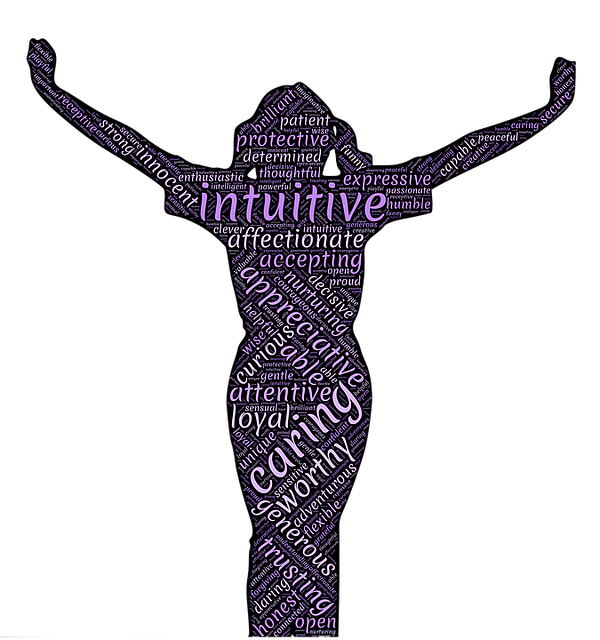
Most disability service organizations are familiar with the concept of person-centered planning. Many apply person-centered planning processes as a service to guide support planning with individuals with disabilities. Good practice in person-centered work includes involving people who know and who care about the individual with a disability in the process. This is another great way service providers can connect with and invite sibling involvement and engagement.
In this short video clip, Beth Mount, one of the pioneers and originators of person-centered work, describes what it means to be person-centered.
"To put the person in the middle of our thinking. Start with getting to know the person and their family first. And then take direction from that wisdom, from that knowledge, from that information." Adult siblings of individuals with intellectual and/or developmental disabilities want the best for their sister or brother. To be happy, to be loved, to have a sense of purpose and belonging. Consequently, adult siblings are often concerned about the future and what it will bring when their parents are no longer able to be the primary care giver or supporter of their sibling with a disability. Planning for the future can be a hard topic to broach because it means having to discuss sensitive, but nevertheless inevitable, issues. Person-centered planning offers a positive, productive option for hosting conversations that address major current and future quality of life areas such as: work; living arrangements; financial support; community involvement, etc.
Siblings and others who know the person with a disability well offer valuable insight about who the person is outside of the service delivery system. Recollections, stories and shared experiences between siblings (and other family members) reveal important information that may not be evident in the service setting. Particular patterns, routines, preferences, talents, interests, gifts and relationships outside of the role of consumer provide dynamics that often deepen and expand understanding about the person in powerful ways.
Service providers that offer an array of person-centered planning processes can be a vital resource to families. PATH, MAPS and Personal Futures Planning methods, among others, are all excellent planning resources that can assist the individual with a disability, their siblings and other family members and friends design a vision for the future and identify the steps that are needed to move toward it.
There are many person-centered planning processes to choose from. Each are distinct approaches generally geared toward assisting the person and their support team explore and address particular questions, issues or ideas. Yet as different as the processes can be, there are common threads – core values and beliefs- that run through any and all processes that are truly person-centered.
- Person-centered planning is a means for uncovering what is already there: the essence
and extraordinary gifts and capacities of a person
…it is about sharing life with one another
…it is about sharing power and giving up control over another human being - Person-centered planning assumes that the person and those who love the person are the primary authorities on the person’s life direction, as such the person is the driver of the process
- Person-centered planning is the beginning of the journey of on-going learning through the shared action that results from participation in planning and working together
- Person-centered planning intends to shatter myths about people who have been given disability labels and to foster inclusive communities
- Person-centered planning relies on skilled facilitation in developing and moving the plan forward
- Person-centered planning requires systems to respond in flexible and meaningful ways relative to the unique interests and needs of the focus person.
- Person-centered planning is a means for uncovering what is already there: the essence
and extraordinary gifts and capacities of a person
-
Common Person-Centered Planning Methods
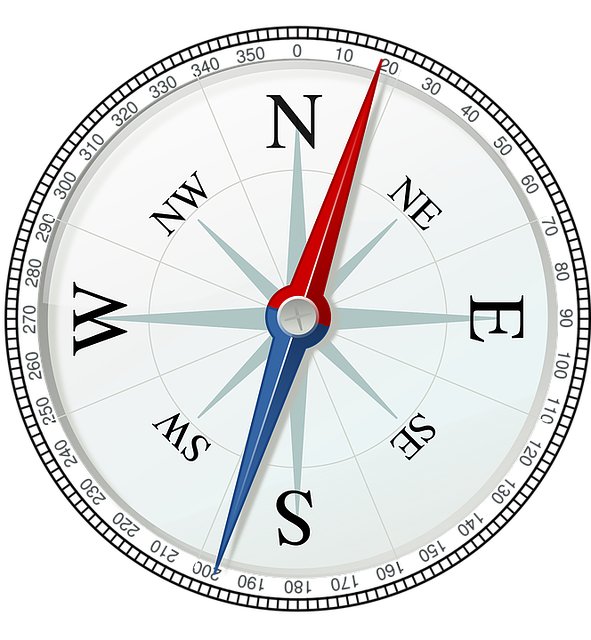
The following table provides a snapshot of some of the prevalent person-centered planning processes that can be used to support individuals with intellectual and/or developmental disabilities, siblings and families in sharing their ideas and vision for the future.
Method or Approach
Defining Characteristics or Features
Personal Futures Planning
(Beth Mount, 2000)
The individual, their family, friends and other allies define what a desirable future "looks like" with regard to a rich life in community, (living, learning, earning, relationships, & important places). This picture of the future directs where and how a person can take on socially valued roles in the community; how they should and are best supported (and by whom); and guides the development and implementation of service arrangements to support the person toward and within these opportunities and roles.
Useful for planners who are looking to create a vision for a meaningful future as a contributing and respected member of community in typical community settings across any/all life domains.
For more information: www.capacityworks2.com
Pathfinders: Group Person-Centered Planning
(Connie Lyle O’Brien and John O’Brien, 2002; Beth Mount, 2002)
Described as a "group-of-groups," 5-8 individuals with their families and trusted allies support one another to make, implement & revise individual Personal Future Plans. The intention here is to take action toward being an integral member in community settings before seeking services. Mutual support grows with shared learning, discoveries, questions and resources. The larger group meets once to do the planning and then quarterly for at least a year to share learning and to update plans. This is most commonly used when people share a life transition, such as going from school to adult life.
Useful for planners who are interested and energized within a construct of a learning community or community of practice and mutual support. Sharing progress and learning within the larger group builds a wisdom among and for all of the members.
For more information: www.inclusion.com
Make a Difference
John O’Brien & Beth Mount, 2005)
This process applies Personal Futures Planning within the service organization as a way to build organizational capacity to establish & mobilize learning partnerships between a staff member and a person who is supported. As with most person-centered processes, the aim is toward establishing the person in valued social roles and experiences in typical community settings.
Useful for planners who are interested in maximizing resources (and creating synergy) – particularly staff resources- by tapping into and matching the natural interests, talents and networks of support staff with those of an individual who shares the same passion, interest, talent, etc.
For more information: www.capacityworks2.com
PATH
(John O’Brien, Jack Pearpoint, & Lynda Kahn, 2010)
Rooted in the recognition that inside of each of us is a fundamental purpose for our life, this group-supported process (again comprised of family, friends and trusted allies), identifies a positive, possible goal of the future and engages in defining workable strategies for getting there.
Useful for planners who have a pretty strong idea about a positive, possible future but are not sure how to get there. The vision or hope for the future is a stark contrast to the current reality of the person’s life. This creates a dynamic tension that directs action. This is a "don’t just sit there, DO something" kind of planning process.
For more information: www.inclusion.com
MAPS
(John O’Brien, Jack Pearpoint, & Lynda Kahn, 2010)
A strategy for clarifying the person’s gifts, surfacing how these gifts can and should be offered through meaningful contribution in community life and identifying the conditions and agreements that must be in place in order for the person to be able to successfully make his or her contribution in meaningful ways.
Useful for planners who are not quite sure of the direction for their life and want or need to gain some insight. Contemplative in nature, the process unfolds a pathway into the future and reveals necessary action/support that is necessary to get there. This is a "don’t just do something, SIT there" kind of planning process.
For more information: www.inclusion.com
Support Plans
(Simon Duffy, 2004)
Based on the idea that there are six critical keys to citizenship, this process organizes and mobilizes available resources to support the person to lead a self-directed life with regard to: self-determination, direction, money, home, support, & community life.
Useful for planners who are interested in supporting the true and full self-determination and self-direction opportunities within and across core areas of basic citizenship. This is not about choice making as a consumer in services, rather choice making as a person in charge of his or her own life as a contributing member in typical society.
For more information: www.centreforwelfarereform.org
Essential Lifestyles Planning
(Michael Smull & Helen Sanderson, 2005)
Concerned with ensuring that what is important to and important for the person in everyday life is attended to consistently. Information about what people like and admire about the individual, as well as routines, rituals and other areas in life that promote and support lifestyle preferences is the focus of this process.
Additionally this process makes explicit the support that is needed by the person to address issues of health and safety in the context of what is important to and important for them. Identifies opportunities for improved or enhanced assistance. This planning process has been "unpacked" over time to create what is commonly called ‘person-centered thinking tools.’
Useful for identifying good to best practices for supporting the person toward expressing, and therefore experiencing, a greater quality of life because people understand and respond to the person’s preferences and interests.
For more information: www.learningcommunity.us
-
Deciding Which Process to Use
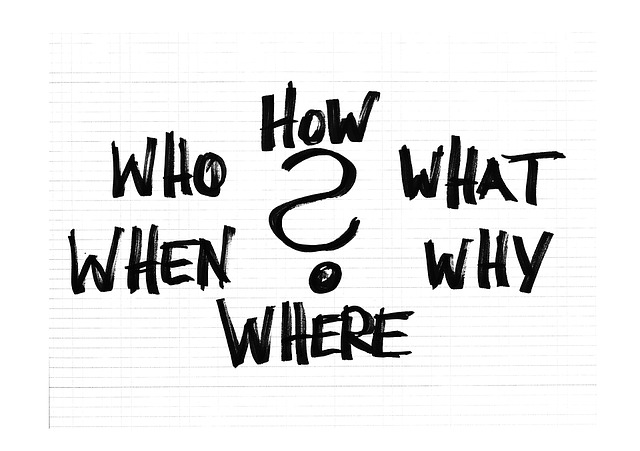
Deciding which person-centered process or method to use will depend on a few factors.
- What is the question that person-centered planning will help to answer? What is the purpose for engaging in planning?
- Does the plan require process facilitation and if so, are there facilitators available who are skilled in facilitating the process?
- Is the organization able and willing to invest the time, energy and other resources in organizing the planning process from start to finish, and when finished, committed to supporting implementation of the plan?
- Is the organization committed to using resources to support the person in typical community-based experiences and settings as a contributing and valued member of society?
As you can see, person-centered planning processes are not a "one size fits all" approach. An organization that has access to skilled facilitators in these and other person-centered processes is in a great position to engage a process that is responsive and tailored to the unique interests, needs and concerns of its primary stakeholders- the individual and their family/supporters.
-
Good Person-Centered Planning Invites Whole Family Involvement
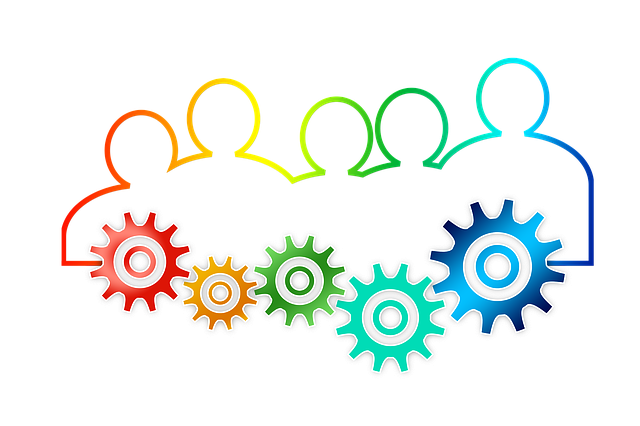
One of the key features of person-centered planning is the inclusion of family, friends and others outside of the service program. Certainly staff are included as well, but they are not the authority or the drivers in the planning process. This can seem weird for those who are used to traditional approaches through which professional authority defines the direction for parts or all of a person’s life.
Person-centered planning presumes that the person and their family know what is best for the person and for the person’s future. Identifying hopes, dreams, concerns and even fears about what lies ahead is driven by the person-centered process. In their Planning for the Future chapter (Meyer & Holl,2014), the authors tell us that by "naming the nightmare," families are able to recognize the kind of support and concrete actions that will need to be put in place in order to avoid realizing that worst case scenario. Service providers can be instrumental in assisting the family in accessing resources and implementing plans that address direct concerns and support high quality of life with and on behalf of the person.
Bringing together family and friends – folks outside of the service world – creates a richness and depth and dynamic for planning and engaging in the person’s future that (unless the person themselves reject this level of family involvement), simply can’t happen any other way.
Authentic person-centered practices will invest time and creative energy in gathering people, opening a listening space that allows appreciation of an important part of person’s story and emergence of ideas about a better future, making a plan for moving into that better future, and generating action that results in new capacities. As a result, people will experience greater effective control over their lives and do more as valued members of their community.
Person-centered planning can be very useful when the person and their family are facing life span issues or transitions. A few examples include:
- Transitioning from school to adult life
- Deciding where and how the person will spend their day
- Moving out of the family home to live in the community
- Deciding on guardianship or supported decision-making models for life planning
- Adults with disabilities who want to get married and raise a family
- Care-taking responsibilities as parents age and are not able to be in that role anymore
- Quality of life: self-determination, direction, money, home, support, & community life
-
Person-Centered Planning – Foundation Values, Principles, Best Practices and Outcomes
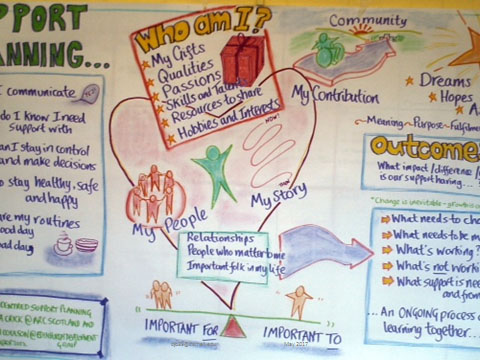
When person-centered planning emerged on the disability scene in the 1980’s, its purpose was clear: to change the social status of people with disabilities (from "client" or "consumer" to contributing member of everyday society) and to change social perception about disability (from a negative sense of ‘otherness’ or ‘us’ and ‘them,’ to an expanded appreciation, awareness and understanding sense of ‘we’). The outcomes of this work should result in deep and meaningful change in the life of a person with a disability: away from life primarily defined and experienced through disability service to a life most people would be glad to have, with the kind of support in place that makes it happen.
Person-centered planning is based on three value-based principles:
- All people are born with gifts, potential, capacity and a purpose in life
- All people have a right to equal access to opportunity and experience through which to explore, discover and express these gifts, capacities, potential and purpose in life
- All people have a responsibility to contribute these gifts, potential, capacity, and purpose in life to society in positive, meaningful and/or productive ways
Today, "person-centered planning" has become a familiar term in the service delivery system designed for people with disabilities. In many ways the term has taken on a life of its own: people attend training in order to become "person-centered," organizations become certified as "person-centered" in the delivery of services. In the U.S., provider organization s who receive federal funds from the Centers for Medicare and Medicaid Services (CMS) are required to prove that services are "person-centered."
Unfortunately, widespread use and expanded definition of what it means to be person-centered has watered down how person-centered practice is used with and on behalf of individuals with disabilities. Many agencies are concerned about complying with the regulations that have been issued by CMS under the Home and Community-Based Services program requiring person-centered planning and community integrated services. The outcomes that result from regulatory compliance often take on a different flavor than the outcomes that were envisioned when person-centered planning was created.
REFLECTION:
Take a moment or two to think about how you and your organization use person-centered planning to support people with disabilities. Are the outcomes of this work reflective of a better service life or do they support people to be part of communities in deep and meaningful ways? What are the words that are used to describe who the person is and how they make their contribution? What does the language that is used to describe who this person is reflect about his or her potential or purpose in life?
For more information about person-centered resources/training, visit www.cclds.org and/or www.personcenteredplanning.org
-
Staff development
Download the Staff Development Tip Sheet PDFInclude the sibling perspective in staff orientation and training. Teach staff members how to identify and engage siblings.
- Offer staff members the chance to listen to family panels, with siblings represented on the panel.
- For example, hosting a sibling panel presentation at your organization for family members to attend is a great way to engage siblings in an educational way. You can invite a few siblings to present their sibling story and most siblings are honored to be asked to share. Siblings and other family members can attend the session to hear the stories and perspectives of the panelists which can provide insight and be though-provoking for everyone involved.
Read about sibling relationships
- Thicker Than Water: Essays by Adult Siblings of People with Disabilities edited by Don Meyer
- How to Be a Sister: A Love Story with a Twist of Autism by Eileen Garvin
- Being the Other One: Growing Up with a Brother or Sister Who Has Special Needs by Kate Strohm
- Special Siblings: Growing up with Someone with a Disability, Revised Edition by Mary McHugh
- Riding the Bus with My Sister by Rachel Simon
- Brothers and Sisters by Peggy Gallagher, Thomas Powell, Cheryl Rhodes
It is important to keep learning. Here are some sites and resources that will help you learn more. Many of these websites offer free registrations and will keep you updated on issues that are important to siblings.
SIBLINGRESOURCES
SiblingResources is an exciting collaboration between Yang-Tan Institute on Employment and Disability at Cornell University, The Sibling Leadership Network, and SibsNY. Through a grant from NYSDDPC, we are building the community for adult siblings of individuals with disabilities in NY. Please visit this website to learn more and register to stay connected to important information.
SIBLING LEADERSHIP NETWORK
http://www.siblingleadership.org/
The Sibling Leadership Network (SLN) is a national nonprofit organization that provides siblings of individuals with disabilities the information, support, and tools to advocate with their brothers and sisters and to promote the issues important to them and their entire families.
SIBSNY
SibsNY is a volunteer organization dedicated to providing the siblings of individuals with intellectual, developmental and learning disabilities with information and support. SibsNY is the NY state chapter of the national SLN.
SIBLING SUPPORT PROJECT
http://www.siblingsupport.org/
The Sibling Support Project is a national effort dedicated to the life-long concerns of brothers and sisters of people who have special health, developmental, or mental health concerns.
SIBSHOPS
Consider hosting Sibshops for younger siblings or a Sibshop Facilitator Training at your agency.
Sibshops are lively events for young brothers and sisters of kids with special needs. With an emphasis on wellness and fun, Sibshops give children and teens a chance to meet other sibs, play outrageous games, talk about the good (and not-so-good) parts of having a sib with special needs with others who "get it" and have even more fun! Sibshops are often facilitated by adult brothers and sisters of people with disabilities, so this is a great way to encourage adult sibling participation. To find a Sibshop near you, visit: http://www.siblingsupport.org/about-sibshops/find-a-sibshop-near-you -
Learning from the experts – voices of experience:
Please learn more about the sibling perspective by reading
What Siblings Would Like Parents and Service Providers to know (PDF from the Sibling Support Project, author Don Meyer)
Download "What Siblings Would Like Parents and Service Providers to Know"What is one thing from What Siblings Would Like Parents and Service Providers to Know that surprised you?
Do you think that siblings of people with disabilities are ignored? Please read
I’m Constantly Thinking about Bev and her Future: Siblings Speak about Aging (PDF from the Sibling Support Project, Author Don Meyer)
Download "I'm Constantly Thinking About Bevs Future"In this article, Don Meyer says "If I have time for only one message, it is this: Brothers and sisters are too important to ignore because they will be in the lives of family members with special needs longer than anyone." Do you think that siblings of people with disabilities are ignored? If so, why?
-
Quiz
1. Which of the following statements explains the importance of siblings of people with disabilities?
A. Siblings often have the longest-lasting relationships of their lives with each other.
B. The peer nature of the relationship makes siblings uniquely positioned to support their brothers and sisters with disabilities to lead self-determined lives.
C. Siblings often become the next generation of caregivers when parents are unable to provide care.
D. All of the above.
CORRECT ANSWER: Answers A, B, and C are all correct.
2.When working with siblings, it is important to remember
A. Don’t expect siblings to be just like parents.
B. Be patient with family dynamics.
C. You will learn over time how to best interact with siblings.
D. Actively reach out to siblings to establish a relationship. Invite siblings to organizational events. Ask siblings what they may need to know and how they may need support for themselves.
E. All of the above.
CORRECT ANSWER: Answers A, B, C, and D are all correct.
3. Which of the following is a good way to connect with siblings?
A. Wait for an emergency to arise to contact a sibling.
B. Ask the person with the disability how s/he want their sibling(s) to be involved.
C. Expect that a sibling will contact you to request an invitation to a meeting.
D. Understand that parents will tell you if their child has siblings who want to be involved.
E. All of the above.
CORRECT ANSWER: The correct answer is B. It is important to ask the person with the disability how s/he wants their sibling(s) to be involved.
4. Providers can connect siblings to other siblings by:
A. Hosting a time and space for siblings from your organization to get together for informal conversation.
B. Sharing information about sibling resources online.
C. Inviting guest speakers to talk to siblings about relevant topics.
D. Encouraging all family members, including siblings to get together for social and educational occasions at the agency like barbeques, speakers, and recreational activities.
E. All of the above.
CORRECT ANSWER: Answers A, B, C, and D are all good ways to connect with siblings.
-
Survey